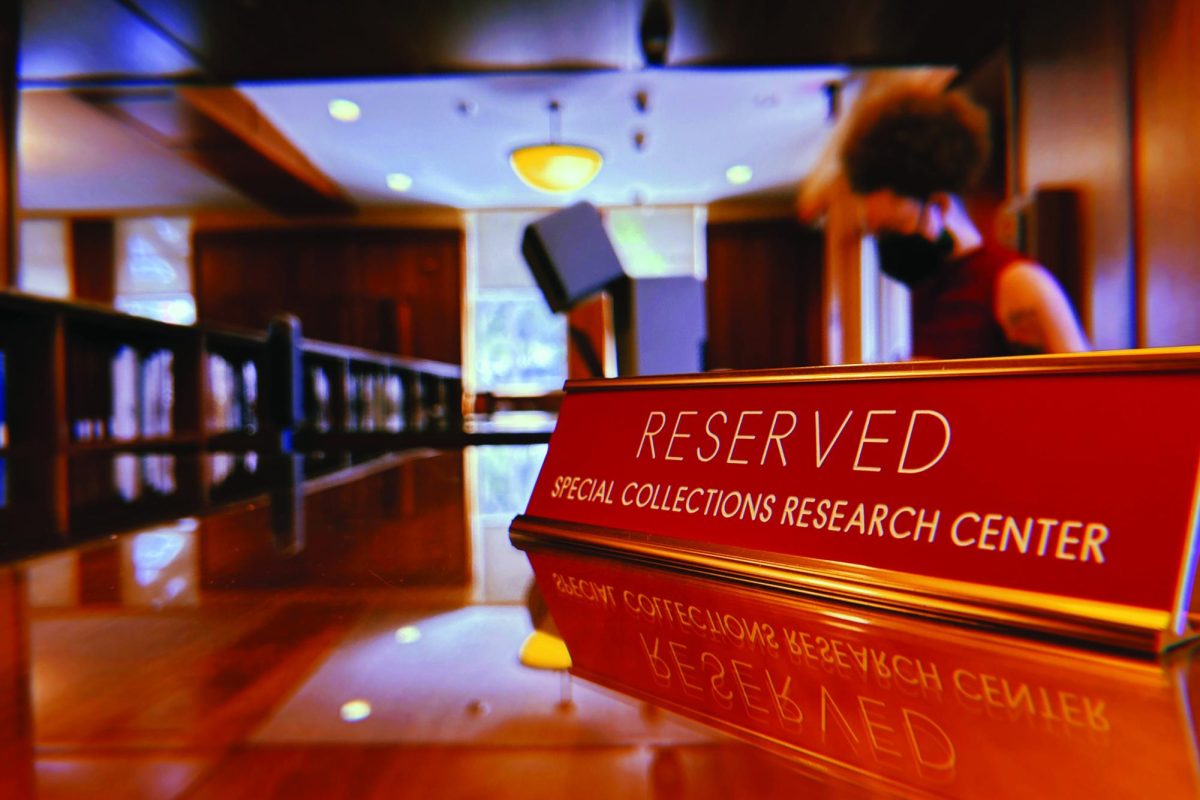As the push to go green increases, N.C . State is taking great strides in reducing its carbon footprint by building LEED -certified structures.
The Student Health Center’s new 23,600 square foot addition that opened in September is the University’s first LEED Gold-certified building.
The Leadership in Energy and Environmental Design ( LEED ) certification system was established by the U.S . Green Building Council ( USGBC ) to assess the environmental performance of buildings and work toward entirely sustainable designs.
According to David Dean, the outreach and communications coordinator for the N.C . State sustainability office, LEED certification is based on a points system and levels of certification.
Dean said buildings can earn LEED bronze, silver, gold, or platinum certifications based on the various steps in the building process and the sustainability features used.
N.C . State’s standards for new buildings on campus were established after the chancellor signed a pledge requiring all new structures to have a minimum of LEED Silver certification in 2008.
Though a challenging goal, the chancellor is striving for total climate neutrality by 2050. This means our University could be completely “green” and sustainable, with little or no scar on the environment, in 38 years.
According to the campus sustainability office’s website; “The strategies incorporated into the Student Health Center Addition include rain gardens, reduced impervious surfaces and underground cistern rainwater capture, reduction of light pollution from exterior light fixtures, and public shower with bicycle racks.”
Will Kapherr , mechanical engineering graduate student, said he thinks the University is doing its job when it strives for sustainability.
“Because [ N.C . State] is very involved in the [green movement], I think it’s kind of expected of us. If we can do something about it we should,” Kapherr said.
Sam Fisher, senior in parks and recreation, agrees with Kapherr . She said the Student H ealth Center’s LEED Gold certification is a good part of the effort to reduce its carbon footprint.
“It’s our responsibility to do something about our sustainability,” Fisher said.
Dean said the Student Health Center’s new addition boasts features like rainwater collection pools, public showers and natural sunlight that helped advance the building to LEED Gold status.
“They might be subtle features that you don’t see but they’re there and they make [the difference],” Dean said.
Throughout the construction process, Dean said many people from the health center and around campus were involved with maintaining high standards of care and service.
“It’s definitely a process the Student H ealth Center was committed to. There were a lot of moving parts and entities that were [engaged],” Dean said.
While the health center is the first LEED Gold-certified building, the University has been constructing environmentally friendly buildings since 2008 and will continue making all new structures to LEED certified standards, according to Dean.
“Every building will strive to get a LEED Silver certification minimum, and in the next three years we’ll have 10 [buildings] done completely,” Dean said.
Dean said there are currently five buildings on campus with LEED certification and at least two buildings that are in the process of being certified.
The Sullivan Shops Three, he said, was the first LEED Silver certified building on campus and works primarily with waste reduction and recycling.
Because the university is taking many steps towards sustainability and climate neutrality, Dean said the community is being affected and served in a positive way.
“It shows N.C . State is committed to green building,” Dean said.
Charles Townes , senior in business management, said he thinks sustainability on campus is important because it sets a good example for other institutions and businesses.
“The country as a whole would benefit if everyone took the same steps our school is taking,” Townes said.
He said we have to continue to take steps toward sustainability.
“It’s important because our future generations’ quality of life depends on the condition we leave the environment in,” Townes said.



